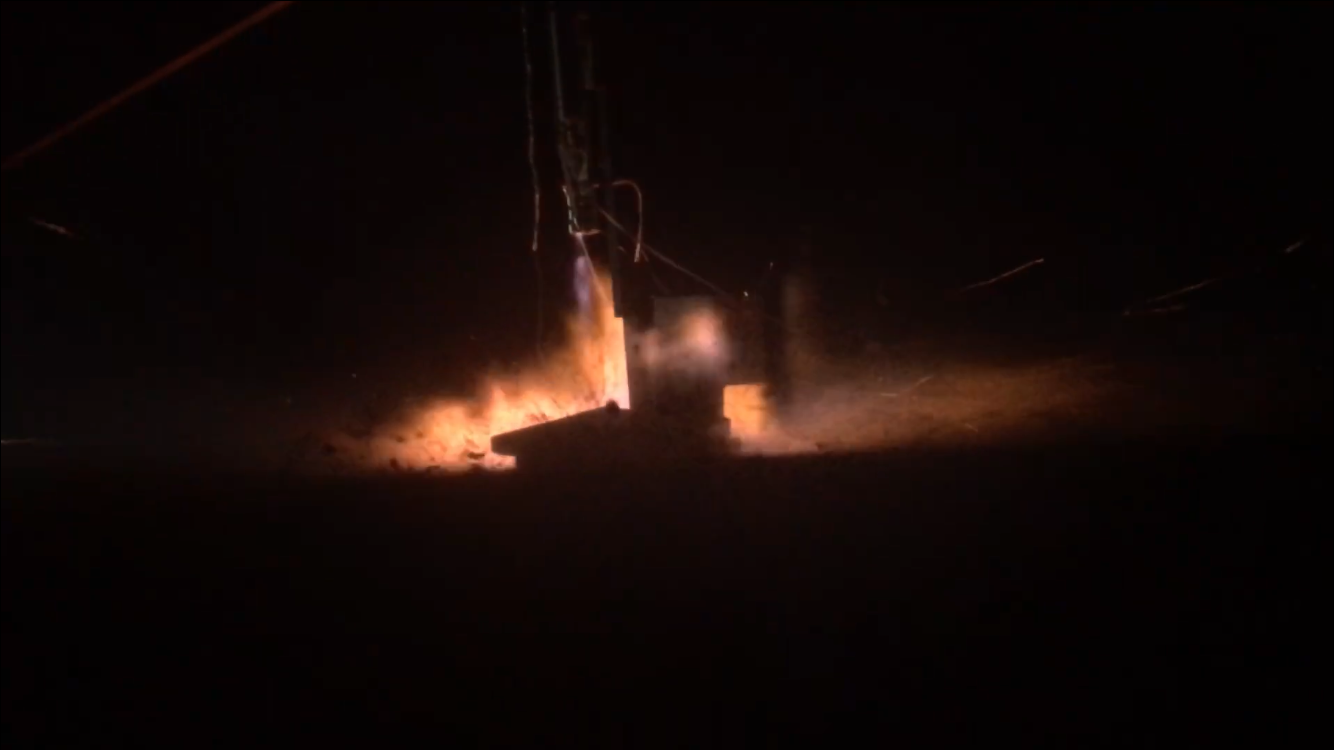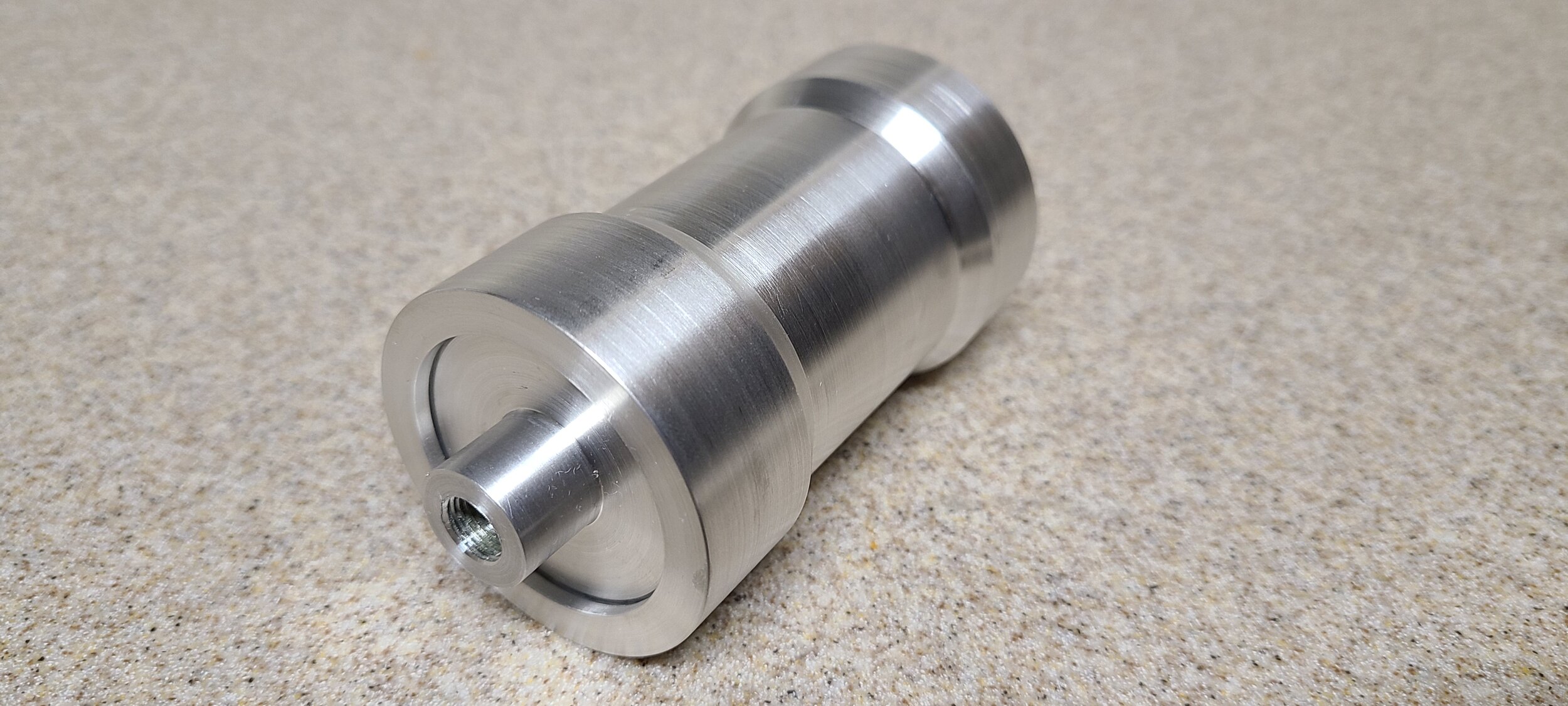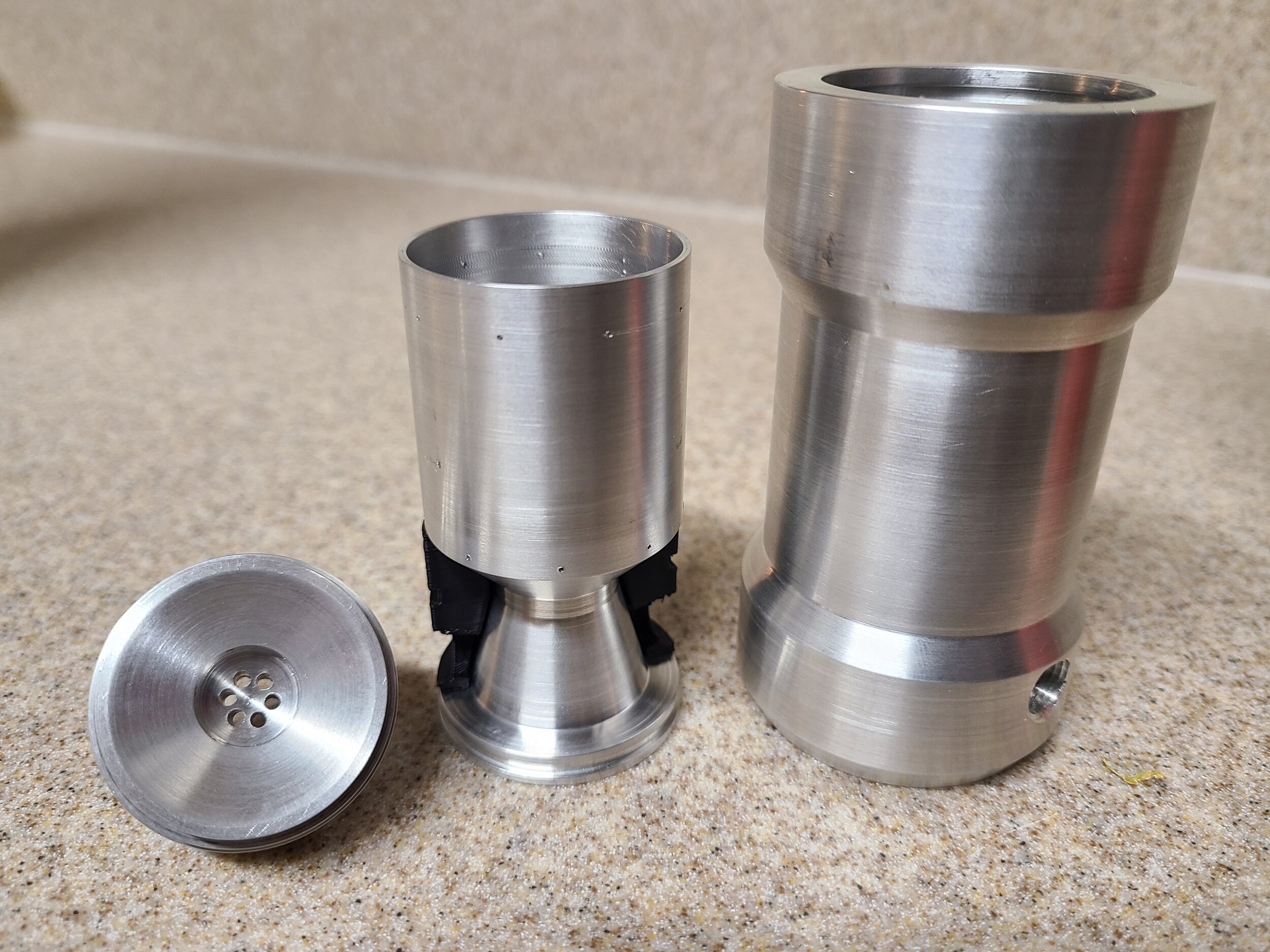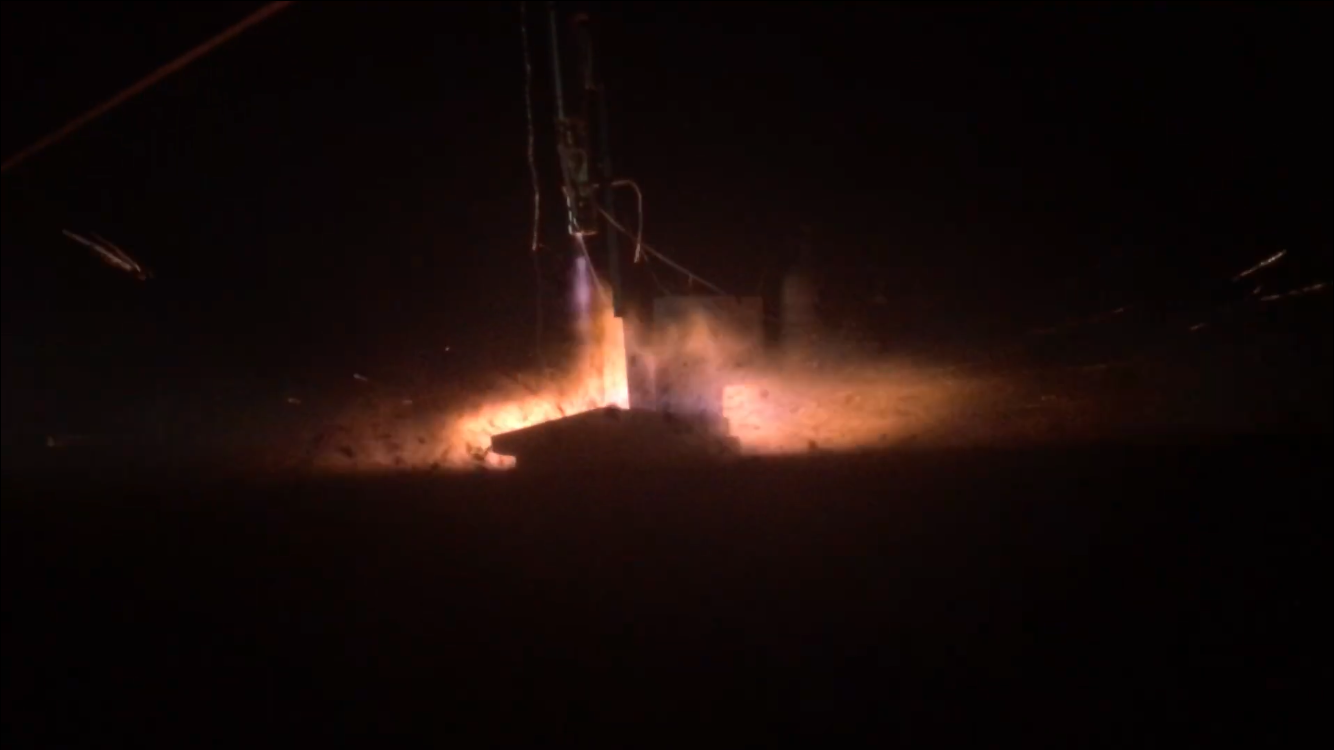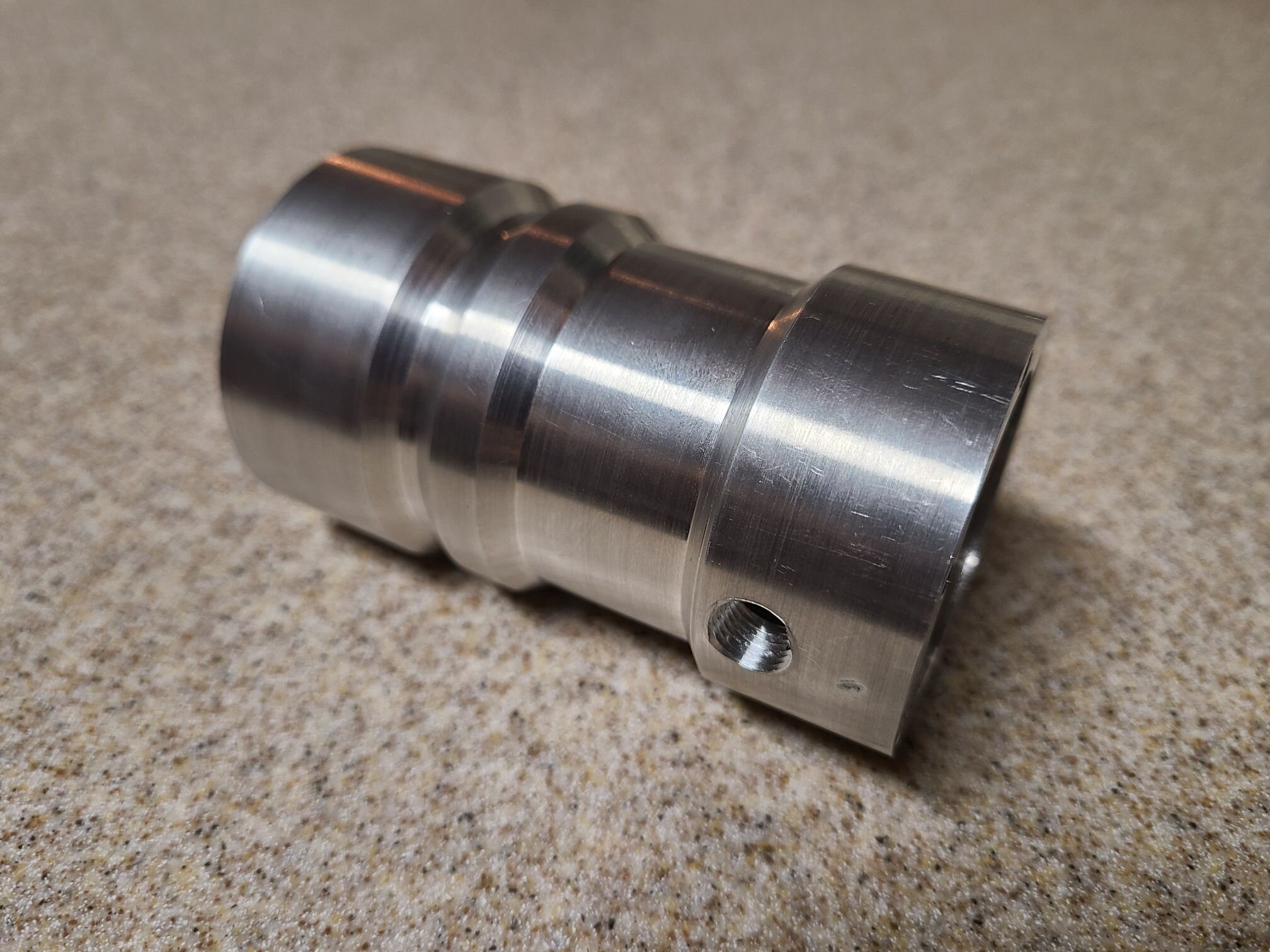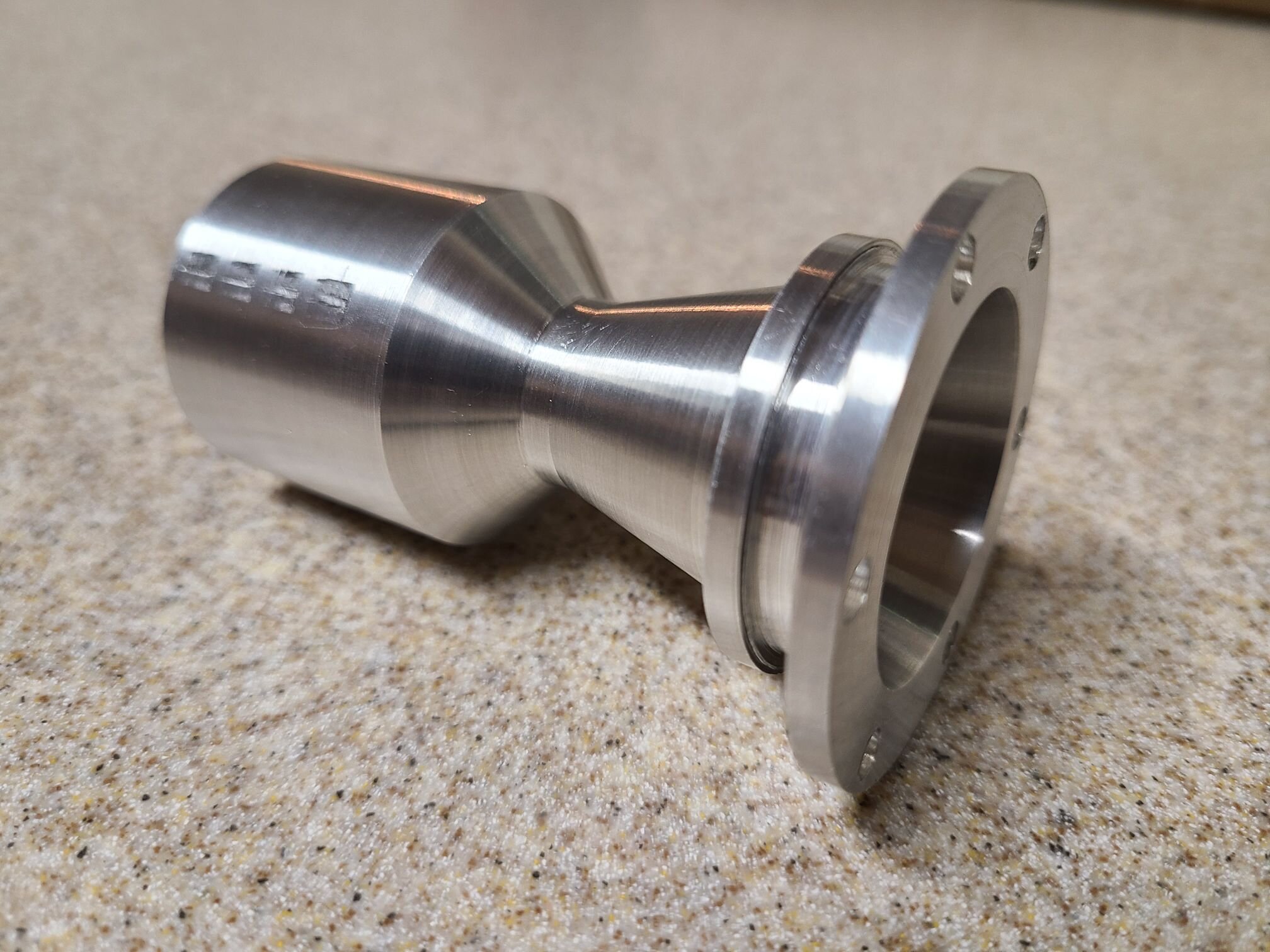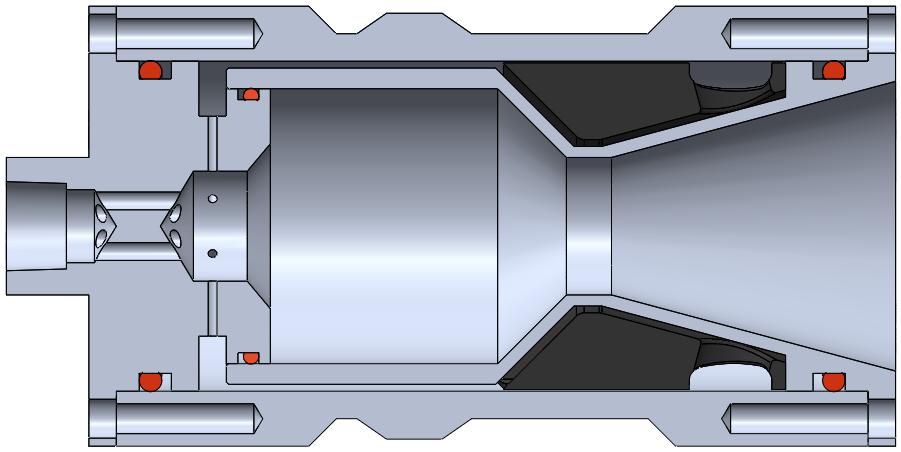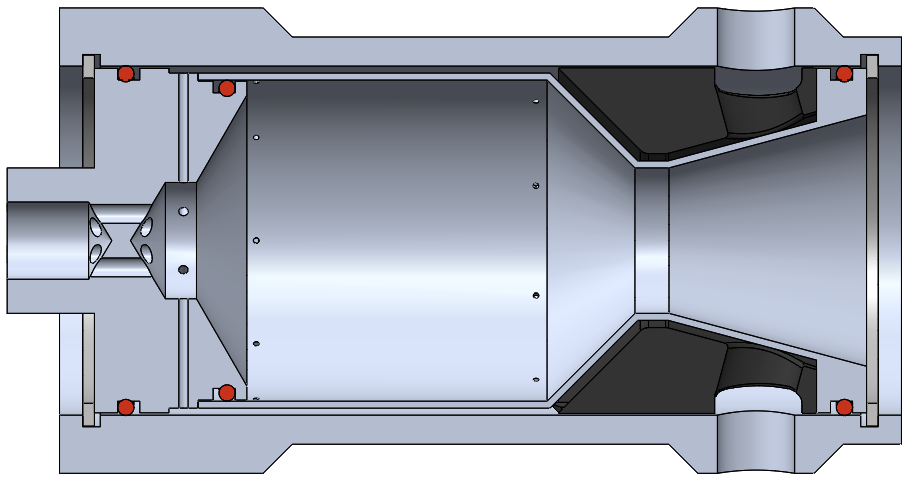1Cat/3
THRUST: 110 LBF
FUEL: ISOPROPANOL
OXIDIZER: NITROUS OXIDE
BURN TIME: 1 SECOND (Initial) / 15 Second (extended)
1Cat/3 is a departure from other Half Cat Rocketry engines. It is an actively cooled combustion chamber with a saddle jacket style regenerative loop (no channels, just an annulus), film cooling (the extra sets of holes in the chamber), and a grossly low O/F ratio to control temperature. The stoichiometric mixture ratio is around 5.7; this is planned to run at 2. All fuel goes around the nozzle, through the cooling jacket, before being injected into the combustion chamber.
The material of all machined components is 6061-T6 aluminum. The initial goal is to survive a short firing, which it may achieve through its several heat mitigation strategies. It also has going for it that the chamber length (L*) is very low, which means that its combustion efficiency will be low and perhaps bring the flame temperature down further.
The injector is a basic set of impinging doublets that should provide decent mixing, and the chamber has two sets of film cooling orifices. All holes were drilled with 3D printed jigs and a drill press + mill vise.
Propellants will be nitrous oxide and isopropyl alcohol, same as the rest of the fractional feline family. Isopropyl is already a good coolant, so the hope is that this, plus the rest of its cooling methods, keeps it from exploding instantly.
Hardware
Static Test 1 - 11/20/21
Combustion Chamber Thermal Management
Saddle Jacket Cooling
The most familiar type of regeneratively cooled liquid engine chamber consists of a series of milled channels, or a bundle of tubes brazed together. While these methods are certainly better for a number of reasons, both require tools that we don’t possess, and would be costly to have manufactured out of house - the same goes for metal 3D printing.
An inefficient but functional cooling jacket can be achieved by a single annulus surrounding the combustion chamber, part of which must be formed by saddle-shaped pieces that are installed around the nozzle throat. The downside to a saddle jacket is that the annulus must be rather small to yield even moderately high flow velocities, which is necessary for cooling the chamber.
Film Cooling
Film cooling is often used in liquid engines, where fuel is sprayed along the walls to provide a barrier against the incredibly high combustion flame temperatures. In 1Cat/3C, two sets of orifices (see below) each contribute 25% of the total fuel flow, so that half of the fuel overall is going to film cooling.
Mixture ratio cooling
As mentioned above, once all fuel flow is considered, the O/F ratio is extremely low. This should drastically lower the flame temperature to something more manageable, although still high enough above the melting point of aluminum that the other cooling methods are necessary without an ablative thermal liner.
Iterations
1Cat/3A
The first manufactured prototype of the engine had a bolted flange for retention and a thicker wall; after some debate, it was determined that this version would not be fired in favor of a thinner-walled chamber.
1Cat/3B
The second iteration was never completed. The interior walls were to be 0.030” thick, which proved to be too thin to machine on the lathe, so it was abandoned. The jacket and injector were kept for the next version.
1Cat/3C
This variant of the engine uses snap rings for ease of retention and manufacturing. The interior wall is 0.050” thick with two rows of nine film cooling holes, one at the top of the chamber and one just before the convergent section of the nozzle.
